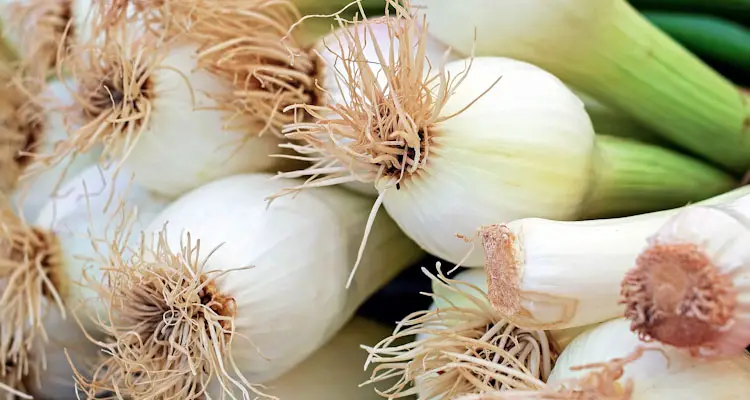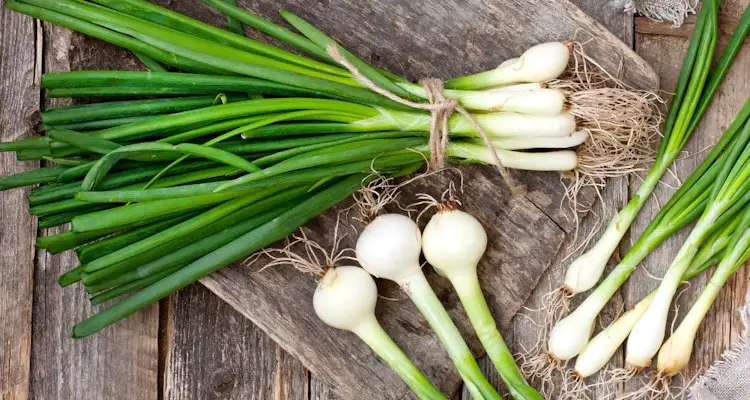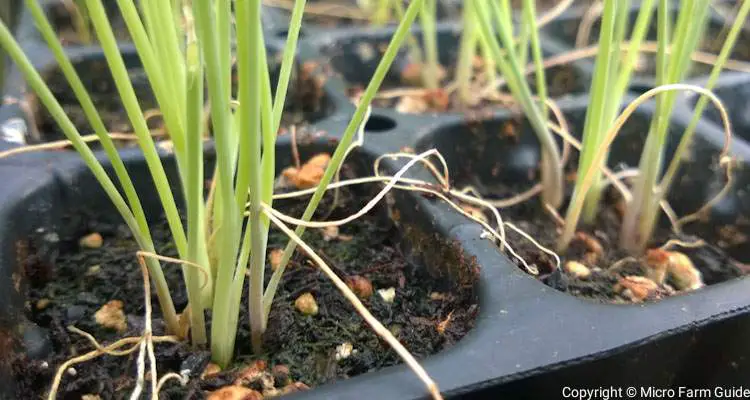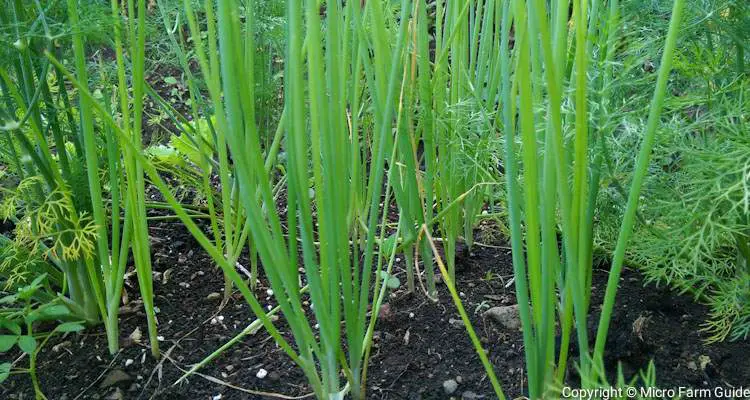Spring onions, or Allium Cepa, are members of the onion family that are harvested before their bulbs are fully developed. They are often called Scallions, due to their appearance, and are grown mainly for their leaves.
However, Spring Onions are different from true Scallions, Allium Fistulosum. Yet, these differences are often obscured since their names are used interchangeably.

In this article, we will look at some common names and uses of Spring Onions, and several ways to grow them at home without much effort. Let’s get started!
What Are Spring Onion Leaves Called?
Spring Onions leaves are usually called Scallions, Green Onions, or Welch Onions depending on the country. They are often labelled as Scallions at supermarkets, which isn’t technically true, but commonly accepted.
In fact, Spring onions are often used as a substitute for scallions. Yet, their leaves have a much more intense flavor than bunching onion varieties. As a result, you will need to adjust the quantity you use to avoid an unbalanced flavor profile.
Is Green Onion The Same As Spring Onion?
In most cases, Green onions and Spring Onions are different names for the same plants.
However, the name Green Onion is also used to describe several other immature onion varieties, which are notably different.
For example, Scallions, Leeks, and Shallots are called Green onions since they all look similar when they are younger.
Despite this, true Scallions are bunching onions that do not form bulbs as they mature and Shallots are naturally smaller with elongated bulbs.

Can You Fry Spring Onions?
You can fry, boil, sauté, or add Spring Onions to any recipe that require an onion flavors. However, the intensity is slightly different based on the part of the plant used.
For example, you can cut and use immature bulbs like an ordinary onion with a milder flavor profile. Yet the leaves have a more intense flavor than bunching onions.
I’ve never made Spring onion rings since we usually harvest them long before they produce bulbs. However, feel free to experiment. You might be pleasantly surprised.
How To Grow Spring Onions
You can grow Spring onions from seeds, root cuttings, or bulbs, using several growing media based on your intended harvest.
These onions are grown primarily for their leaves but can develop bulbs when conditions are right.

For example, you can grow Spring onions in pots using a soil-based media to harvest their leaves.
However, it would be best to grow them in soil for bulbs since they can take several months to grow from seeds to harvest.
That said, spring onions grow best in moist, well-drained fertile soils. Yet still, they can handle partial shade and are affected by the light they receive.
For instance, onions depend on shorter light cycles to stimulate bulb production. So if you wish to grow them for their bulbs, you will need to plant them during Autumn, so they will be ready for harvest during Spring.
However, you can grow Spring onions year-round for their leaves, so long as they receive enough light, moisture, and nutrients.

Related Questions
Is Spring onion actually an onion?
Spring onion is a young onion harvested when the bulb is still immature. The name is derived from the fact that it is picked during the Spring.
What is the common name of Spring Onion?
Spring onion is commonly called Green onions or Scallion due to their similar appearance and uses. However, while it is a member of the Allium family, it is not a bunching onion, as the nickname suggest.
Are shallots and Spring onions the same thing?
Shallots differ from Spring onions in shape, color, size, and taste. They are members of the onion family but have a milder flavor and elongated shape, unlike typically young spring onions which are rounded.

